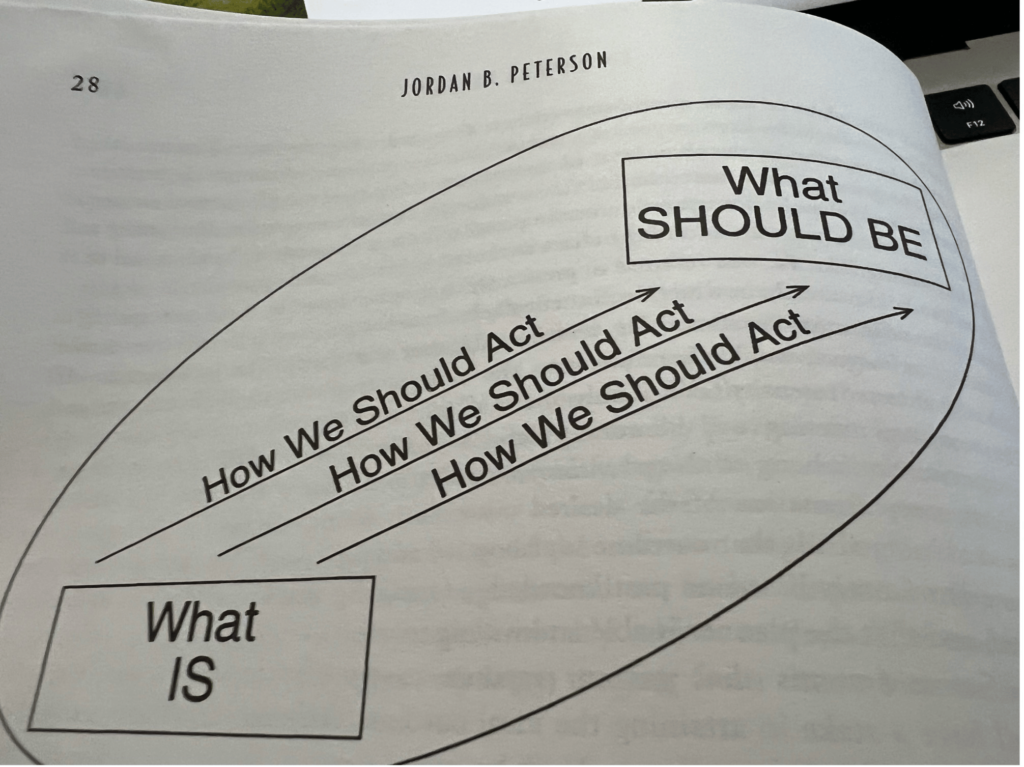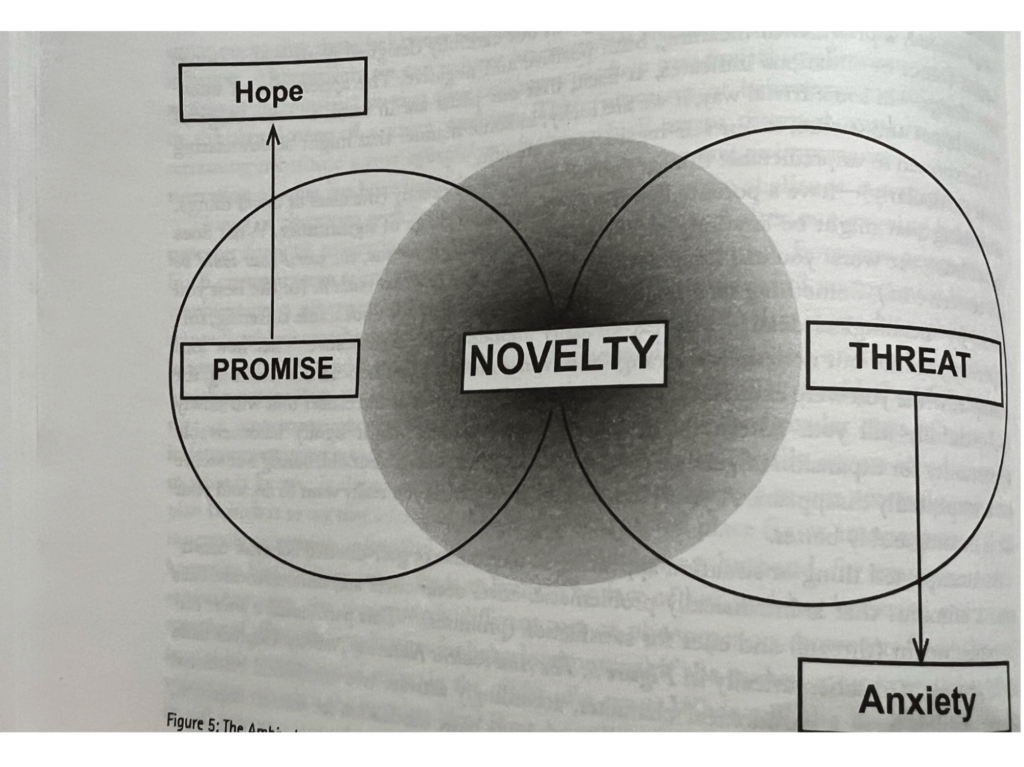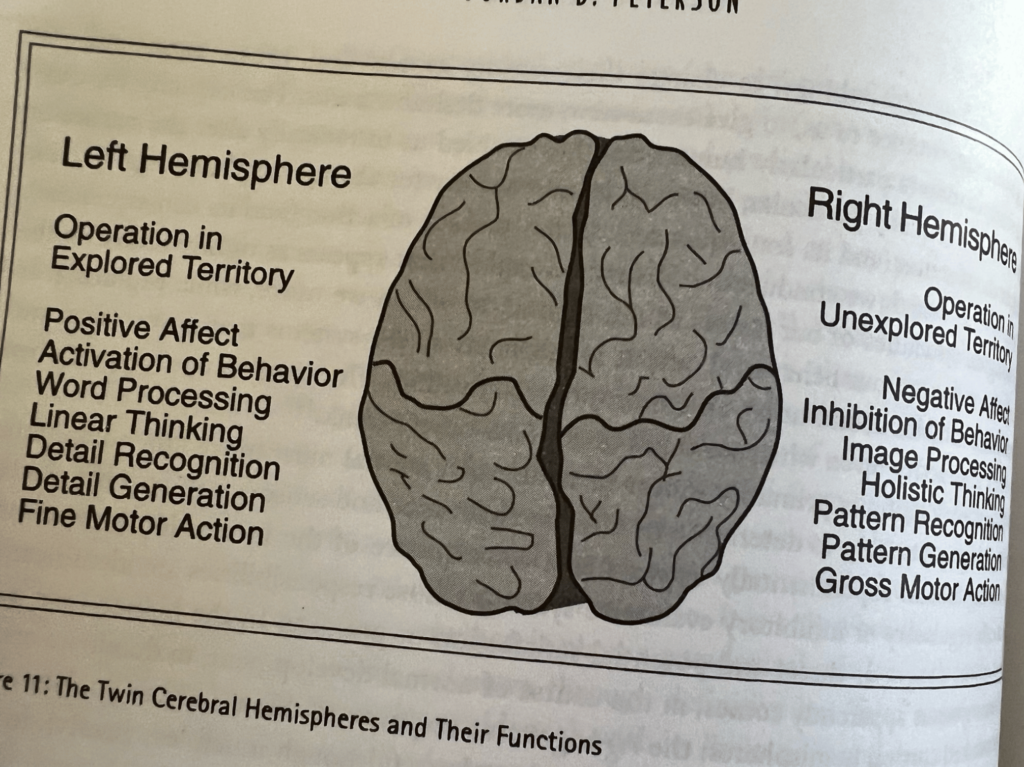These are the Stories of Our Lives
In his 1999 academic text Maps of Meaning, professor Jordan Peterson from the University of Toronto, sets out to explore how human beings use story (or myths, as he refers to them) to make decisions, give meaning to their lives, and help them understand their place within culture. He states, “It is therefore the case that our maps of the world contain what might be regarded as two distinct types of information: sensory and affective. It is not enough to know that something is. It is equally necessary to know what it signifies.”[1]
When the book was written 25 years ago, it was ahead of its time, as now this is a common viewpoint of psychologists. It also has significant bearing on the study of leadership, as it is another map we can layer on to understand why humans think and behave the way they do. Essentially, Peterson describes how “we compare our interpretation of the world as it unfolds in the present to the desired world, in imagination, not to mere expectation; we compare what we have (in interpretation) to what we want, rather than to what we merely think will be.[2] The following diagram helps us see this play out: [3]
Encountering The Unknown
Of the points Peterson makes in Maps of Meaning, I was most intrigued by his description of what occurs when the unexpected happens—when there is a “mismatch” between what is and what we thought should be. In these moments, our system is activated in ways that can govern two opposite reactions—fear or hope. The amygdala is activated in the brain and those are two paths we can chose. What Peterson shows is that whether we chose the path of fear or hope is largely dependent on the stories we believe about ourselves and the world. This understanding intersects with my doctoral research project on resilience in several ways as described below.
Responding to Chaos/Novelty (Stress)
Peterson refers to the state we experience when things don’t go as planned as chaos or novelty. In my portfolio project, I refer to the same basic principle as stress. When we encounter stress, our body naturally wants to go into fight, flight or freeze mode. This is the anxiety path represented below.[4]
However, through consciously choosing to believe a different story about the situation and taking embodied action toward the hope path, we can choose a different response than our default stress mode—one that leads to promise and hope. The question is how do we help people believe this different story and learn habits that make choosing the path to hope easier? This is the opportunity I’ve been exploring by studying resilience over the past two and a half years.
Engaging The Left Hemisphere of the Brain Through TWIRL
Peterson explains how the two halves of our brain operate. As seen in the diagram below, the right hemisphere gets engaged when something unexpected happens and tries to make sense of it by going into protection mode (otherwise known as system one processing via Kahneman)[5]. The problem is that this fires up the FEAR pathway and keeps us stuck. Because resilience is the ability to “bounce back” from stress, we need to purposefully engage the left hemisphere to get us out of the fear track and onto the hope track.
My portfolio project is a workshop designed to teach a technique I designed to do just that by using the acronym TWIRL as a metaphor (story) to teach girls how to TWIRL their way through stress instead of staying in fight, flight or freeze. After learning each step of TWIRL, the girls work through scenario-based videos with their primary female caregiver (PFI) to practice and embody the new story. Interestingly, although I had not read Peterson’s book until now, each step of TWIRL reflects a function of the left hemisphere, which puts the brain back on the road toward hope.
T: Tell your team
W: Walk and Talk to God
I: Indulge in Things That Bring You Joy
R: Rest
L: Let Go of the Outcome
As I continue to learn more and more about how the body, mind and spirit are connected, I am more hopeful than ever that we can use these concepts to help people learn powerful ways of coping with the chaos of life on this side of heven.
[1] Jordan B. Peterson, “Maps of Meaning: The Architecture of Belief” (New York ; Routledge, 1999), 22.
[2] Peterson, 28.
[3] Peterson, 28.
[4] Peterson, 44.
[5] Daniel Kahneman, “Thinking, Fast and Slow” (New York: Farrar, Straus and Giroux, 2013).
8 responses to “These are the Stories of Our Lives”
Leave a Reply
You must be logged in to post a comment.



Sounds like your project is going to be awesome. Anxiety can be debilitating. I am interested to know how you have responded to the techniques while working on the project.
Shonell – They always say that we teach what we most need to learn, right? I actually created TWIRL at the darkest time of my anxiety several years ago to help me remember what to do when I panic. Now God is using it to not only help me, but hopefully many others. I love that so much!
Laura,
Yes!
“What Peterson shows is that whether we chose the path of fear or hope is largely dependent on the stories we believe about ourselves and the world.”
I am curious what themes you may be recognizing in your research with the mothers and their daughters. Are there certain stories or themes of hope or fear?
What have been best practices in intervening with these women/young women.
Excellent processing the material!
I had already copied the quote and was preparing my reply to Laura when I read Kristy’s response. She beat me to it… “What Peterson shows is that whether we choose the path of fear or hope is largely dependent on the stories we believe about ourselves and the world.”
Laura, awesome post. Your project sounds incredibly interesting. Is fear a major outlier of resistance in your professional work and in your project? I don’t think it’s a coincidence that the Bible speaks so much about fear.
I love the TWIRL acronym!
Thank you.
Michael – Fear is the opposite of hope, so yes, definitely. The key is to dig deep enough to discover what’s at the core of the fear. It’s easier to run away from fear. It’s more difficult to run toward hope, but we can strengthen those pathways and impulses in many ways-one of which is reminding ourself that we have a choice! Thank you for the encouragement.
I’ve heard lots of stories where moms are trying to be the opposite of their moms, sometimes to the extreme! Also lots of moms who are fearful of losing control as their girls grow up – even thought that’s what’s supposed to happen:) Mostly, I think many problems can be resolved by both the girls and the moms learning to listen well. That’s such a huge success factor in all relationships!
Laura,
Awesome post! I agree with the others; your project sounds incredible! I hope you’ve had a relaxing Thanksgiving with your family.
Thank you Tonette. Do you think that moms and tween girls in your schools would be interested in this type of workshop? I’d love to offer it there for them!